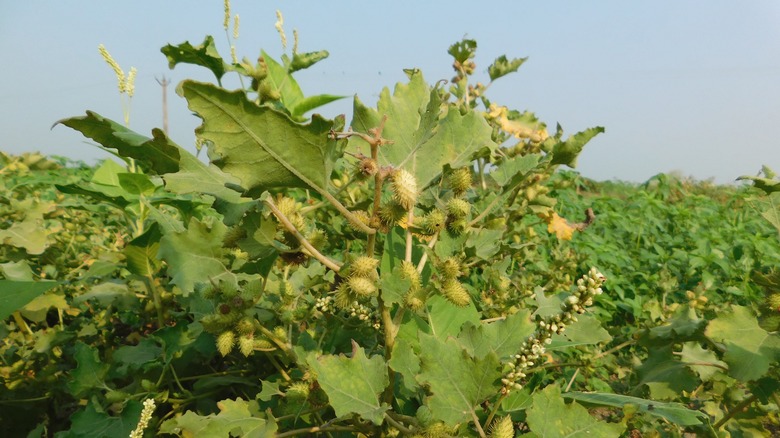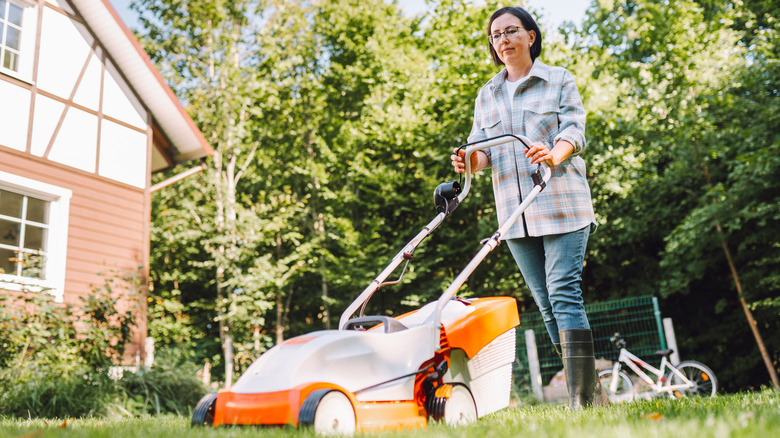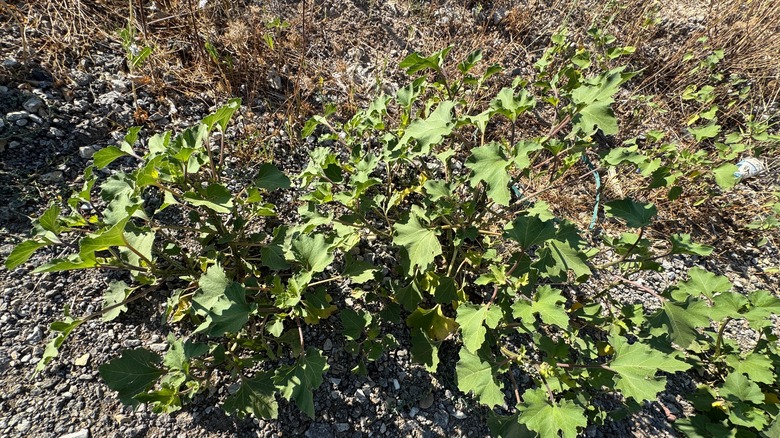Cocklebur Weed Is The Prickly Lawn Nuisance That We Can Help You Get Rid Of
No one likes a yard and garden full of weeds, and when those weeds are as toxic to people and animals as cockleburs (Xanthium strumarium) can be, then it's even worse. Not only is cocklebur dangerous, but it's also notoriously difficult to get rid of thanks to its aggressive and fast-growing nature. You're not helpless against cockleburs, though, and a combination of pulling or mowing young plants, encouraging insects that kill cockleburs to visit your garden, and if necessary, careful use of herbicides — you can largely keep this pesky weed under control.
Cocklebur is native to North America in addition to several other continents, but regardless of its native status, it's not a plant many people want to keep around. Growing as an annual in temperate and subtropical zones throughout the world, cockleburs' seeds are extremely skilled at clinging to clothing and animals, allowing them to hitch a ride from location to location. In fact, their burs were even the inspiration for Velcro. Ideally, you should deal with cockleburs before they reach the stage of producing seeds, both to avoid the annoyance of the burs, and more importantly, to prevent the plant from reproducing.
Mowing and pulling cocklebur
As unpleasant as cocklebur is, it is often manageable, especially in smaller spaces, without the use of herbicides. The trick is to make sure you either mow it or pull it out before it has the opportunity to begin producing seeds. You definitely want to mow if you don't want weeds to take over, as mowing cuts the plants down before they go to seed and produce the next generation of weeds. Be sure to wear gloves and long sleeves when pulling up or touching cockleburs, as they can sometimes cause skin irritation.
Keep an eye out for cocklebur seedlings in spring and early summer and remove them before they can outcompete your other plants. Because cocklebur seeds rarely survive longer than three years, you should be able to see a significant reduction in cockleburs in your yard or garden relatively quickly as long as you stay on top of mowing or removing the plants early in development. Just be aware that even burs that don't look fully mature can often be viable, so be sure to dispose of them, and don't forget to check your clothes and your pets' fur for any hitchhiking burs to avoid spreading this plant.
Using natural predators and herbicides to control cocklebur
Cockleburs are often fed on and killed by the larvae of the Phaneta imbridana moth and the Euaresta aequalis fly. In fact, these North American insects are so successful at destroying the plants that Euaresta aequalis have been imported to Australia and other continents to help control cockleburs there. Making an effort to attract these good insects to your own yard could go a long way towards taking care of your cocklebur problem. Consider planting legumes, members of the aster family, members of the carrot family, members of the mustard family, or verbena to draw in these types of beneficial insects.
If all other methods of managing cockleburs have failed, you can also consider using herbicides. Cockleburs are vulnerable to a wide range of common herbicides including 2,4-D and glyphosate. While they have very real downsides and you should always think twice before immediately using those popular weed killers, they has been found to be effective against cockleburs. If you opt to use an herbicide, be sure to carefully follow all directions on the label.


